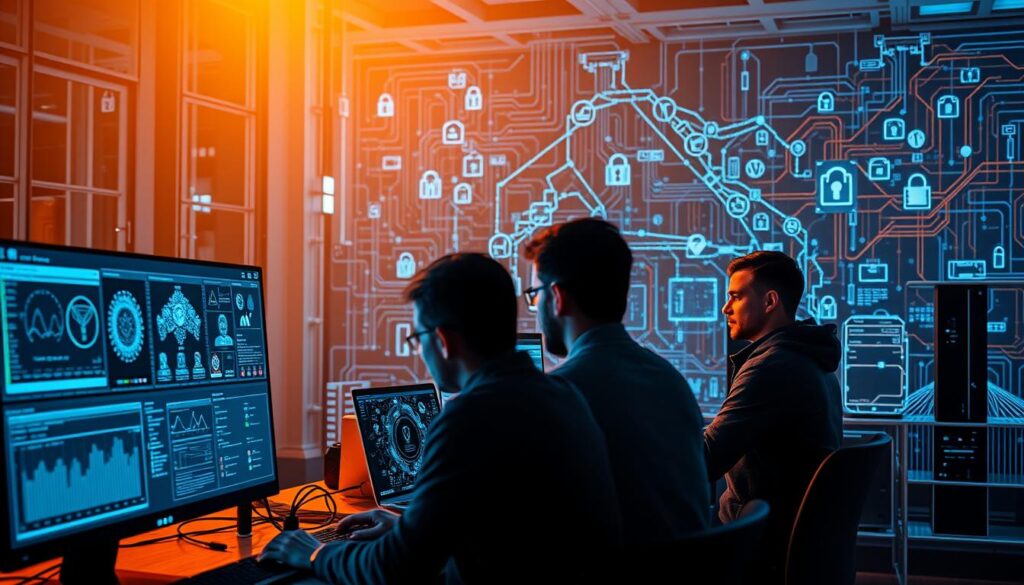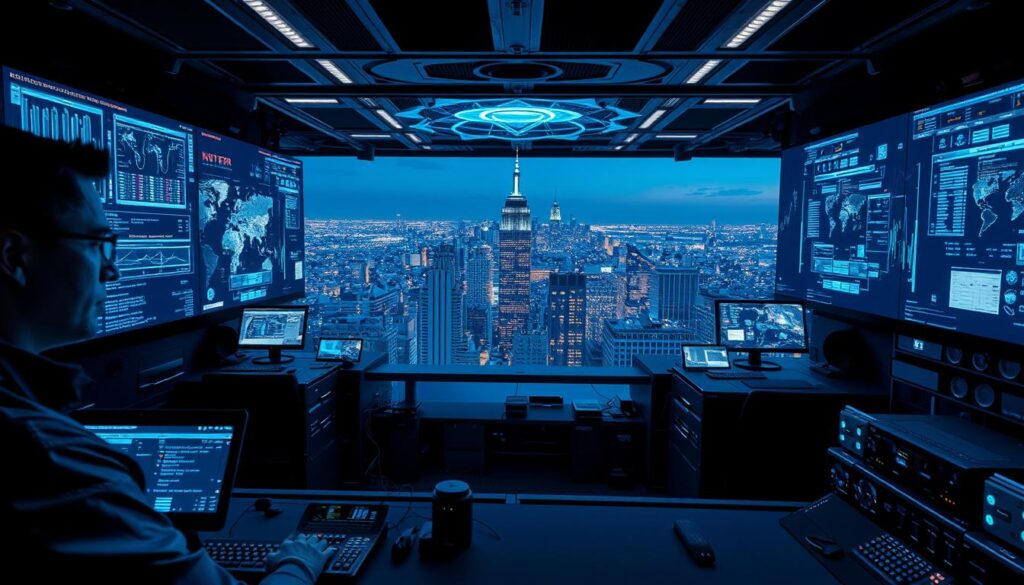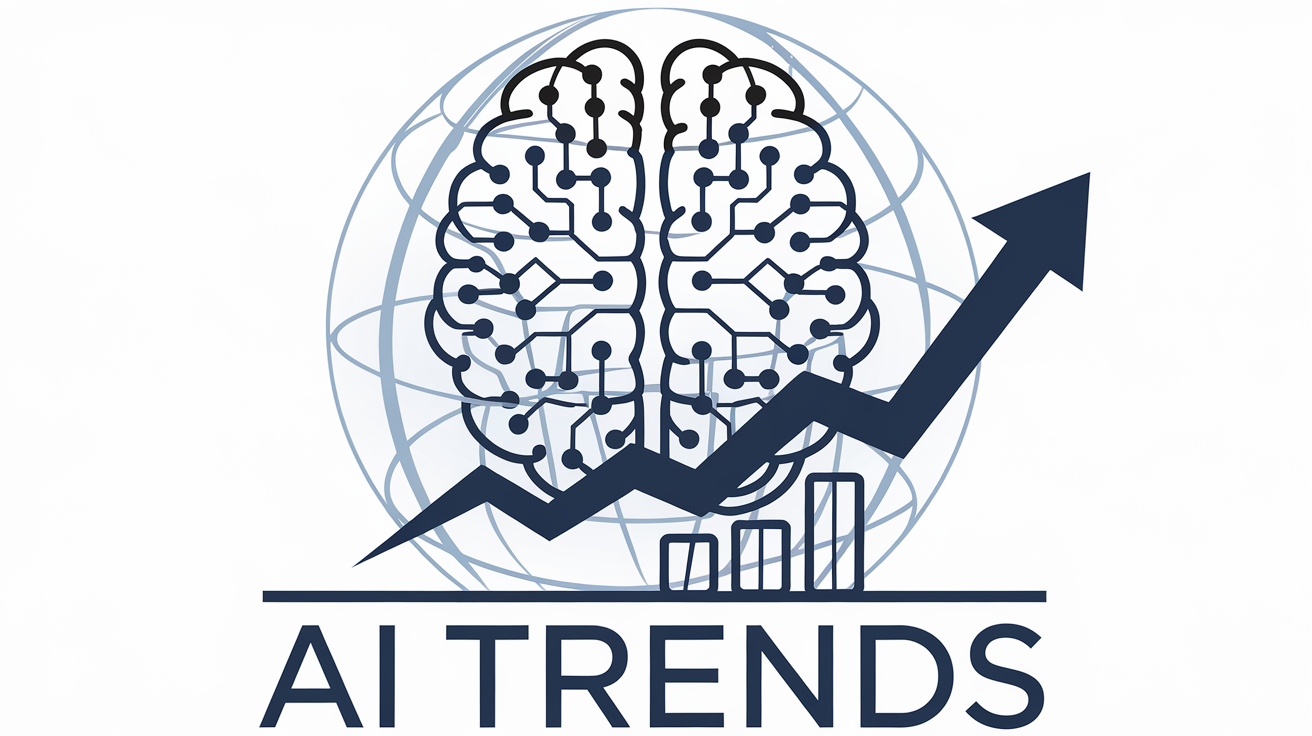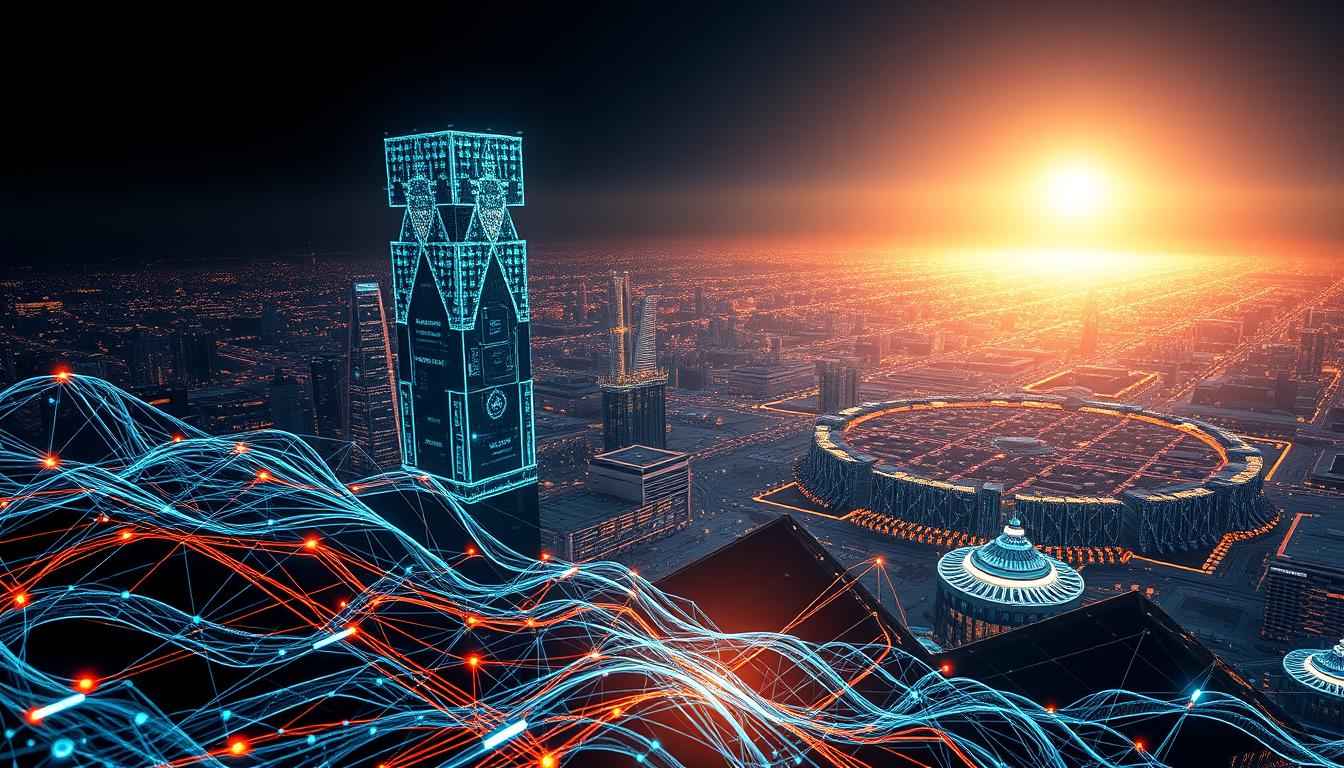In today’s fast-paced digital world, cybersecurity faces constant challenges from advanced threats. Artificial intelligence in cybersecurity is now a game-changer. It helps organizations defend against attacks in real time. The rise of AI in cybersecurity has made it possible to detect hidden risks and stop breaches before they escalate.
Traditional security tools often lag behind modern cybercriminal tactics. AI-driven systems, however, learn from data patterns to identify suspicious activity. Over 70% of companies now use AI in their security strategies. This cuts response times and stops 90% of common attacks automatically. This shift reflects the urgent need for smarter defenses in a threat-filled online environment.
Table of Contents
ToggleKey Takeaways
- AI transforms cybersecurity by analyzing threats faster than human teams.
- The rise of AI in cybersecurity reduces risks from evolving malware and phishing attempts.
- Organizations using artificial intelligence in cybersecurity see 30–40% fewer data breaches.
- AI adapts to new threats, making it critical for modern security operations.
- Global adoption of AI tools in cybersecurity grew by 45% in 2023, per industry reports.
The Rise of AI in Cybersecurity: A Paradigm Shift
Cybersecurity is changing fast. AI advancements in cybersecurity are making big changes. Now, we move from old rules to new, smart systems. This change is because old ways can’t keep up with new threats.
How AI is Transforming Traditional Security Approaches
Old security methods used set rules. But impact of AI on cybersecurity measures brings new ways to fight threats. AI learns from data as it happens, catching things humans might miss.
For example, Darktrace uses AI to find odd network patterns before attacks happen. These new tools are always learning and getting better, making security faster and more accurate.
The Evolution of Cyber Threats Necessitating AI Solutions
“The complexity of modern threats outpaces manual detection capabilities,”
was said in a 2023 Gartner report. Today, threats like polymorphic malware and APTs are common. These attacks are hard for humans to catch, but AI can watch all day, every day.
Old antivirus software can’t keep up with these threats. So, companies are turning to AI tools like Palo Alto Networks’ Cortex XDR.
Key AI Technologies Driving Cybersecurity Innovation
- Deep Learning: Teaches models to spot patterns in attacks, helping companies like Cylance fight new threats.
- Natural Language Processing (NLP): Checks emails for phishing by looking for certain words and phrases.
- Computer Vision: Looks at network traffic like images, spotting odd patterns, thanks to Vectra AI.
These AI tools are changing security. They help automate responses and stop attacks before they start. AI is not just a tool; it’s the new base of security.
Understanding Machine Learning for Cybersecurity Protection
Machine learning for cybersecurity uses algorithms to analyze data and detect patterns. It improves security without needing to be programmed. There are three main types: supervised, unsupervised, and reinforcement learning.

- Supervised learning: Trained on labeled datasets to classify threats, like identifying phishing emails using known examples.
- Unsupervised learning: Discovers hidden patterns in unlabeled data, such as spotting unusual network activity that hints at a breach.
- Reinforcement learning: Adapts strategies through trial and error, optimizing responses to evolving attack methods.
| Type | Description | Cybersecurity Use |
|---|---|---|
| Supervised | Uses labeled data | Malware classification |
| Unsupervised | Finds hidden patterns | Anomaly detection |
| Reinforcement | Adapts via feedback | Real-time threat response |
“Machine learning turns raw data into actionable insights, transforming how we defend against cyberattacks.”
Companies like IBM and Darktrace use these methods to predict vulnerabilities and block intrusions. A 2023 Ponemon Institute study found 68% of organizations using machine learning for cybersecurity detect threats faster. But success also depends on quality training data and keeping systems updated. Teams must balance automation with human oversight to avoid overreliance on untested models.
AI-Powered Security Solutions in Action
AI is changing how we fight cyber threats. These systems use machine learning to check huge amounts of data fast. They help spot phishing and stop ransomware, showing their worth in tough situations.

Real-Time Threat Detection and Response Systems
Darktrace’s AI finds odd network actions in seconds, not days. It caught a big attack on a Fortune 500 company by noticing strange data moves. This quick action cuts down on how long it takes to respond to a breach by up to 90%, a 2023 Gartner report says.
Predictive Analysis and Preemptive Security Measures
| Method | Traditional Security | AI-Powereded Solutions |
|---|---|---|
| Threat Prediction | Relies on past incidents | Adaptive to emerging attack patterns |
| Response Speed | Manual investigation required | Automated containment within minutes |
Behavioral Analysis for Identifying Anomalous Activities
Microsoft Defender uses behavior checks to find insider threats. It watches login times, file access, and device use to catch unauthorized access. It even caught a phishing attack on a healthcare provider by noticing a user downloading patient data at odd hours.
Automated Incident Response and Remediation
- IBM’s Watson automatically isolates compromised devices during ransomware outbreaks
- Palo Alto Networks’ Prisma Cloud rolls back system changes linked to malware infections
- Automated patch deployment for zero-day vulnerabilities in real time
These new tools are making security proactive, not just reactive. Companies like Target and Mastercard use them to block 85% of phishing attacks before they hit employees.
Challenges and Opportunities in AI Cybersecurity Integration
AI brings big changes, but it’s not easy to use in cybersecurity. Companies face privacy risks, technical issues, and learning how to work with AI. They need to overcome these to use cybersecurity automation with ai well.
Addressing Privacy Concerns in AI Security Implementation
AI systems need lots of data, which worries people about privacy. Laws like GDPR make companies be open about how they use data. IBM uses ai integration in cybersecurity defense in ways that protect privacy, like federated learning.
This method trains models without sharing sensitive data. It’s all about finding a balance between new ideas and following rules to keep everyone’s trust.
Overcoming Technical Barriers to Effective AI Security
| Challenge | Solution |
|---|---|
| Dirty or incomplete training data | Data enrichment pipelines and synthetic data generation |
| Legacy system compatibility | API-driven integration frameworks |
| High computational costs | Edge computing and cloud-optimized algorithms |
Building Human-AI Collaborative Security Teams
Even with AI, humans are still key for making tough decisions. At Palo Alto Networks, AI helps detect threats, cutting down on false alarms by 40%. This is thanks to AI’s help in guiding the analysis.
Training programs, like those at CrowdStrike, teach teams to understand AI’s insights. This builds trust in working together with AI.
“AI isn’t replacing analysts—it’s making their expertise more impactful.”
To really make ai integration in cybersecurity defense work, we need to rethink how we work, not just the tech. By focusing on education and making tools fit for each team, we can unlock the best of human-AI teamwork.
Conclusion: Embracing the Future of AI-Enhanced Cybersecurity
The future of AI in cybersecurity depends on constant innovation to fight new threats. AI has changed security by detecting threats in real-time, predicting attacks, and responding automatically. Now, we need to focus on quantum-resistant algorithms and integrating AI with physical and digital systems to stay ahead.
New technologies will lead to smarter defenses. Soon, autonomous systems will handle threats without human help. AI models trained on global data will also improve predictive accuracy. Companies like Palo Alto Networks and CrowdStrike are already using AI to find threats that traditional tools miss.
Businesses should adopt AI in phases. First, check your systems to see where AI can help. Then, partner with vendors that offer AI solutions and train your staff to work with AI. Even small steps, like using AI for threat hunting, can make a big difference.
The future of AI in cybersecurity is about creating systems that adapt and are ready for the future. By using these tools now, companies can face tomorrow’s challenges today. It’s important to balance AI with human oversight to ensure it works well with expert judgment.
As AI gets better, so do the chances to use it as a strategic advantage. AI will help with everything from fighting ransomware to securing IoT networks. Stay up to date, try out new AI tools, and focus on growing your security. With AI, you can turn your security into a strong competitive edge.
FAQ
What is the role of AI in cybersecurity?
AI is key in cybersecurity. It boosts threat detection and response. It uses machine learning to spot patterns in network traffic. This makes it easier to tackle threats quickly.
How does machine learning contribute to cybersecurity?
Machine learning helps by analyzing big data for cyber threats. It uses supervised and unsupervised learning to predict vulnerabilities and classify malware. This makes security measures more effective.
What are AI-powered security solutions?
AI-powered security solutions use artificial intelligence to improve cybersecurity. They offer real-time threat detection and predictive analysis. This makes security operations more efficient.
What challenges come with AI integration in cybersecurity?
Integrating AI in cybersecurity comes with challenges. There are privacy concerns and technical barriers like data quality. Also, it’s important to work well with AI. Organizations must tackle these to use AI’s full potential.
How is AI used in threat detection?
AI helps in threat detection by analyzing network behavior and user activity. It spots anomalies that might mean a security breach. AI gets better over time, making security stronger.
What is the future of AI in cybersecurity?
The future of AI in cybersecurity looks bright. We’ll see more AI use, better integration with security systems, and more autonomous solutions. These advancements will help create stronger cybersecurity against new threats.
You may also like: AI in Financial Services: 7 Powerful Ways It’s Transforming Banking and Investment Strategies

